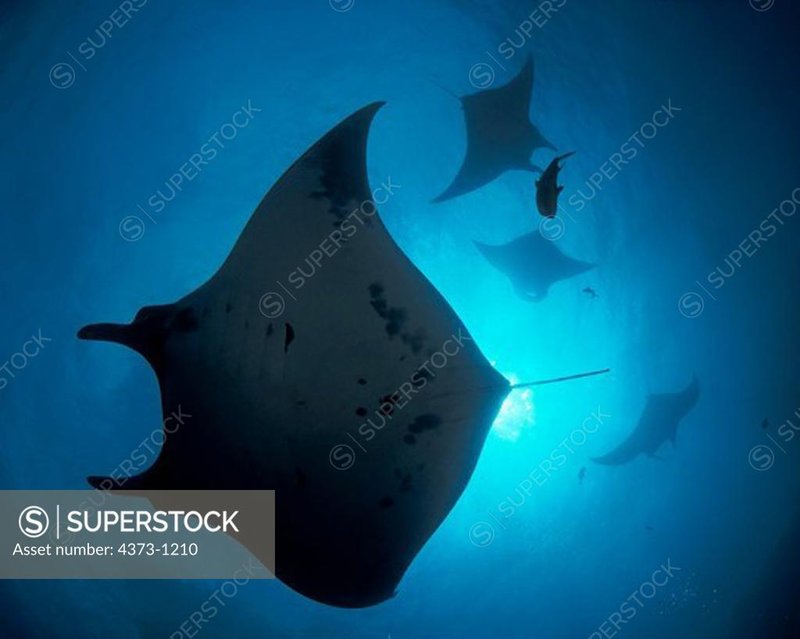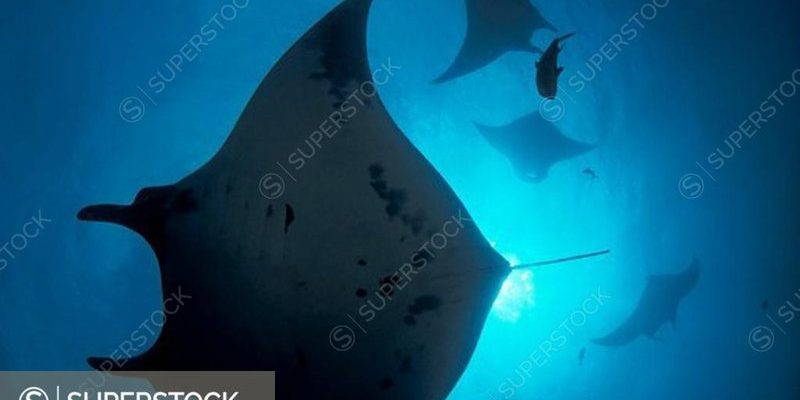
Have you ever seen a creature that seems to glide through the ocean like a bird in the sky? That’s exactly how the Giant Manta Ray moves through the water! With their graceful wingspan and friendly demeanor, these majestic animals captivate anyone lucky enough to encounter them. They are not just big; they are among the largest species of rays in the ocean, drawing adventurers and marine enthusiasts alike to admire their beauty.
The Giant Manta Ray can grow up to 29 feet across, making them a true giant of the sea. But don’t let their size intimidate you! Despite their massive wings and intimidating appearance, they are gentle filter feeders, mostly dining on tiny plankton and small fish. Watching them glide through the water is like witnessing a superhero in their element—effortless and awe-inspiring.
Physical Characteristics
The Giant Manta Ray is easily recognizable by its large, flat body and remarkable wings. Their bodies are primarily a dark blue or black on top, while the undersides are white. This coloration not only makes them stunning but also serves a purpose. The dark color helps them blend in with the ocean floor from above, while the light underside camouflages them against the sunlit surface from below.
One of the most interesting features of the Giant Manta Ray is its cephalic lobes. These are like little flaps that extend from their head and help direct food into their mouths, much like how a dog uses its ears to pick up sounds. These lobes are also capable of folding back when they’re not in use, making them an incredible adaptation for feeding in the ocean.
Additionally, these rays possess a unique way of swimming. Instead of using their tails like many other fish, they use their pectoral fins, which they flap in a rhythmic motion. This style of swimming allows them to glide gracefully through the water, and sometimes they even leap out of the sea, performing acrobatic flips!
Habitat and Distribution
Giant Manta Rays call the warm waters of tropical and subtropical oceans their home. You can find them in various locations, from the depths of the Pacific to the Indian Ocean and even the Caribbean Sea. They prefer areas rich in nutrients, often congregating near coral reefs and surface waters where plankton is abundant. Think of them as ocean nomads, always on the move to find their next meal.
Interestingly, these rays are often found in areas with strong currents. They enjoy the mix of warm and cold waters, which brings in a constant supply of food. So, if you ever get the chance to dive or snorkel in these habitats, keep your eyes peeled! You might just spot a Giant Manta Ray gracefully passing by.
While they are often solitary, you might also see groups of them gathering in the same area, especially during feeding times or mating seasons. Isn’t it wonderful to think that these gentle giants can come together and share their habitat in such a harmonious way?
Diet and Feeding Behavior
The diet of a Giant Manta Ray is predominantly made up of tiny plankton, small fish, and other microscopic organisms. Their feeding technique is fascinating! They swim with their mouths wide open, filtering water through their gills and trapping food on their gill rakers. It’s like nature’s own vacuum cleaner at work!
During feeding, you might see them perform a behavior called “barrel rolling.” This is where they twist and turn in the water to maximize the amount of food they filter in—a truly impressive display of their feeding strategy. It’s almost like they’re dancing underwater, moving gracefully while efficiently eating.
While they might seem like they’re just floating around, these rays are constantly on the lookout for food. They use their keen sense of smell and can detect plankton from quite a distance. If you’re ever lucky enough to see one feeding, it can be quite an unforgettable experience, with water swirling around as they feast below the surface.
Reproductive Behavior
When it comes to reproduction, Giant Manta Rays have quite a unique approach. They are ovoviviparous, which means that instead of laying eggs, females give birth to live young. A single female usually produces one or two pups at a time after a gestation period of around 12 months. It’s like having a special surprise party under the sea!
During mating, males often demonstrate elaborate courtship behaviors, including swimming in circles and performing flips to attract females. This courtship dance can last several days, and it’s all about showing off! Once a female selects a mate, they’ll engage in a series of copulatory behaviors before the female carries the young for nearly a year.
Once the pups are born, they are relatively independent and can swim away from their mother right after birth. It’s a remarkable survival strategy, as they must quickly learn to navigate the vast ocean on their own. The bond might be short, but the impact of their mother’s care lasts a lifetime.
Conservation Status
Though Giant Manta Rays are breathtaking creatures, they are unfortunately under threat due to various human activities. Their populations are declining primarily due to overfishing, habitat destruction, and the demand for their gill rakers in traditional medicine. It’s disheartening to think that such beautiful animals face these challenges because of human actions.
Conservation efforts are underway to protect these magnificent rays and their habitats. Many marine parks and reserves have been established to safeguard their breeding and feeding grounds. Education and awareness campaigns are also crucial in promoting responsible diving practices and protecting marine ecosystems.
If we want future generations to experience the wonder of Giant Manta Rays, it’s essential to support conservation initiatives and spread the word about their importance in the ocean’s ecosystem. The more people know, the more we can do to help protect these gentle giants.
| Characteristic | Details |
|---|---|
| Size: | Up to 29 feet (8.8 meters) wingspan |
| Habitat: | Tropical and subtropical waters |
| Diet: | Plankton, small fish |
| Lifespan: | Up to 50 years |
| Speed: | Up to 10 mph (16 km/h) |
Behavior and Social Structure
Giant Manta Rays are often seen swimming alone, but they’re not exactly hermits! They exhibit intriguing social behaviors, especially during feeding times when they may gather in groups. These gatherings can sometimes lead to a sort of underwater ballet, where multiple rays glide gracefully together, creating a mesmerizing sight for onlookers.
Aside from social feeding, these rays communicate with each other through body language and possibly even subtle changes in color. When in groups, they may appear more vibrant, signaling their health and readiness to mate. It’s fascinating how these gentle giants use their physical presence to convey information.
Interestingly, they also exhibit curious behavior towards humans. Divers often report encounters where Giant Manta Rays swim close by, seemingly inspecting their new visitors. This inquisitive nature adds another layer of charm to these already captivating creatures. It’s like they’re saying, “Hey there, friend! Want to join me for a swim?”
Interactions with Humans
Humans have a complex relationship with Giant Manta Rays. On one hand, these magnificent creatures attract tourists and divers from around the world, who come to observe them in their natural habitat. This ecotourism can significantly contribute to local economies and promote conservation efforts. However, it’s crucial to ensure that such interactions are conducted responsibly.
Unfortunately, irresponsible tourism practices can lead to stress and harm to the rays. It’s essential for divers and snorkelers to follow guidelines that respect the animals and their environments. Approaching too closely or using flash photography can create anxiety for these gentle giants. Think of it this way: you wouldn’t want someone invading your personal space, right?
On a more positive note, organizations are working to educate the public on how to engage respectfully with these creatures. By promoting responsible tourism, we can enjoy the beauty of Giant Manta Rays while ensuring their safety and well-being for years to come.
Interesting Facts About Giant Manta Rays
Here’s a fun bit of trivia: did you know that Giant Manta Rays can weigh up to 3,000 pounds? That’s equivalent to a small car! Despite their size, they are incredibly agile in the water.
Another cool fact is that each Giant Manta Ray has a unique pattern of spots on its belly, much like a fingerprint for humans. Researchers use these patterns to identify individual rays, which helps in tracking their movements and behavior.
And let’s not forget about their incredible brains! Giant Manta Rays are known to be quite intelligent, exhibiting behaviors comparable to those of dolphins. They are curious, problem-solvers, and can even recognize themselves in mirrors—how’s that for brainpower?
FAQ
How big can a Giant Manta Ray get?
The Giant Manta Ray can grow to an impressive wingspan of up to 29 feet (8.8 meters) across! Their sheer size makes them one of the largest species of rays in the ocean, though their gentle nature is what truly sets them apart.
Are Giant Manta Rays dangerous to humans?
No, Giant Manta Rays are not dangerous to humans. In fact, they are quite the opposite! These gentle giants are filter feeders and primarily eat small marine organisms. They pose no threat and are often known to approach divers and snorkelers out of curiosity.
What is the lifespan of a Giant Manta Ray?
Giant Manta Rays can live for up to 50 years in the wild. They experience a slow growth rate, and their long lifespan makes it even more crucial for conservation efforts to protect their populations.
Do Giant Manta Rays migrate?
Yes, Giant Manta Rays are known to migrate to find food and suitable breeding grounds. They often travel long distances, sometimes covering hundreds of miles, to seek out the best conditions for feeding.
What threats do Giant Manta Rays face?
Giant Manta Rays face several threats, including overfishing, habitat destruction, and the illegal trade of their gill rakers. These factors have led to a decline in their populations, making conservation efforts extremely important.
Where can I find Giant Manta Rays?
You can find Giant Manta Rays in warm, tropical, and subtropical oceans around the world. They are often seen near coral reefs and in nutrient-rich waters, making places like the Maldives, Hawaii, and parts of Mexico great spots for encountering them.
Can I swim with Giant Manta Rays?
Yes, many diving operators offer opportunities to swim with Giant Manta Rays in a responsible and respectful manner. Always ensure that you are following guidelines to avoid disturbing these magnificent creatures during your encounters.
What do I do if I see a stranded Giant Manta Ray?
If you encounter a stranded Giant Manta Ray, it’s crucial to contact wildlife rescue organizations or local authorities for assistance. Avoid trying to return it to the water yourself, as they can be delicate and require specialized care.
How do researchers study Giant Manta Rays?
Researchers study Giant Manta Rays through a combination of tagging individuals for tracking, observing their behaviors in the wild, and gathering data on their habitats. This information is vital for understanding their populations and informing conservation efforts.
Are there any specific conservation efforts for Giant Manta Rays?
Yes, many organizations and governments are implementing conservation measures to protect Giant Manta Rays. These include creating marine protected areas, regulations against overfishing, and campaigns to raise awareness about the importance of these creatures.

